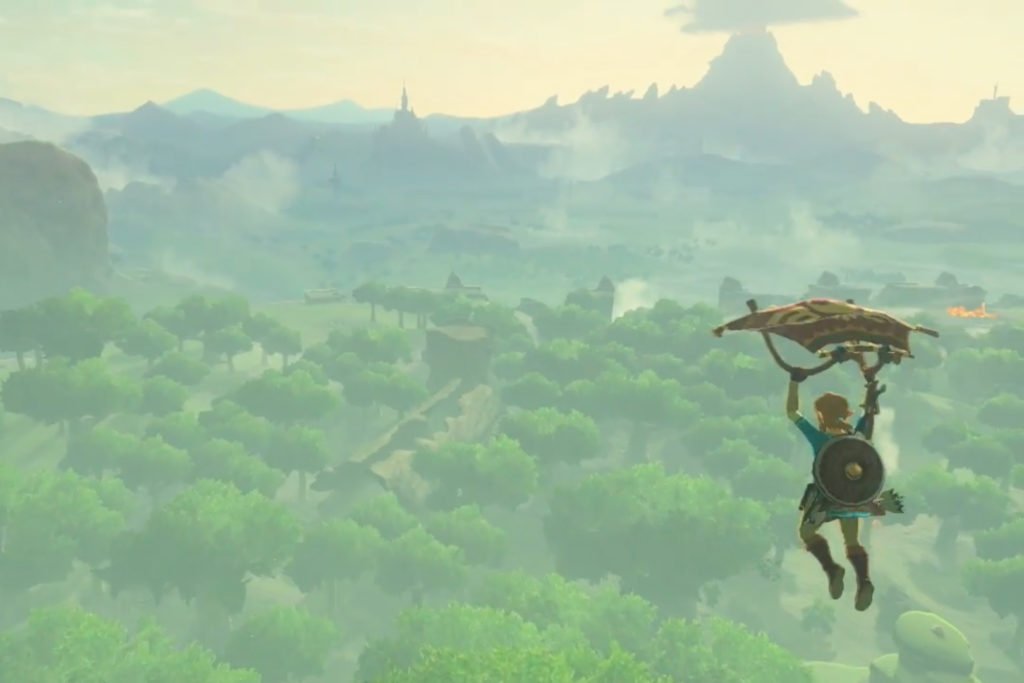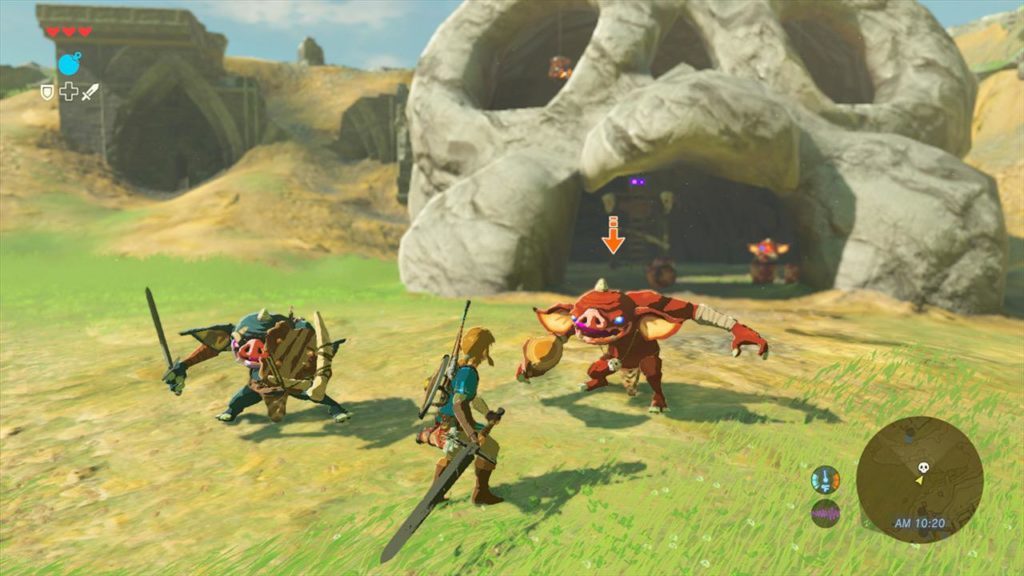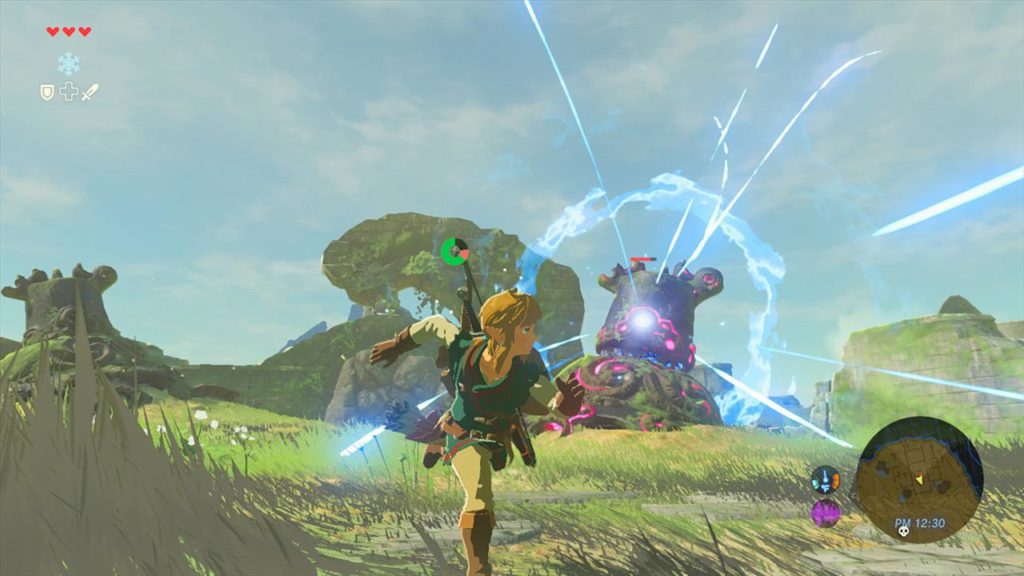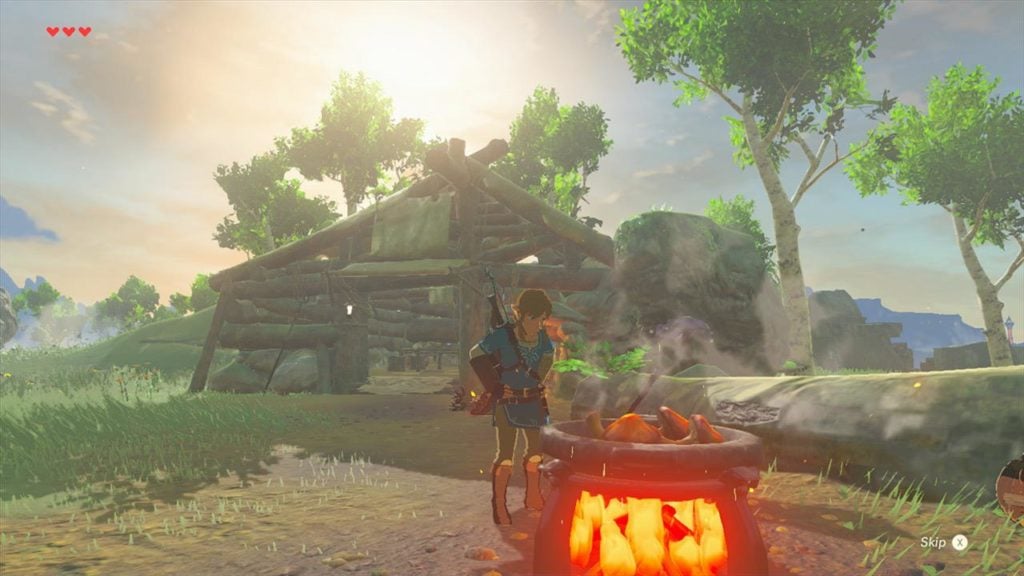Table of Contents
The Legend of Zelda: Breath of the Wild released barely two weeks ago, yet it has received 10/10 scores from numerous gaming news outlet. The game deserves these perfect scores because it manages to set a new bar for open-world games. Furthermore, since Breath of the Wild improves on numerous game mechanics, it will no doubt be the standard by which future open-world games are measured.
Go anywhere anytime, but only if you can get there
Breath of the Wild is massive, comparable only to The Witcher 3: Wild Hunt in terms of size, and gamers can explore Breath of the Wild to their heart’s content. Many open-world games let players travel anywhere at any time, even at the beginning of the game, which can leave gamers overwhelmed and remove feelings of accomplishment upon discovering a new location. However, Breath of the Wild solves this problem by locking off many locations until gamers have the proper tools and/or stamina upgrades, while still offering an open and explorable world.
The game starts on a plateau that players cannot climb down. Gamers can explore the plateau, but to leave they need a paraglider. Once they have the paraglider, much of the game opens up, and players can explore new locations. Furthermore, the main character Link can climb almost any surface and glide from any cliff, but climbing, gliding, and swimming all require stamina. In fact, certain locations are effectively out of reach until Link upgrades his stamina. These limitations are not unlike those found in previous Legend of Zelda games or metroidvania games, and they make discovering secrets and new locations feel like something accomplished through perseverance rather than dumb luck.

Very few open-world games have the same exploration mechanics as Breath of the Wild, but the game still manages to organically include various strategies and exploration tips. For example, players find a small cliff jutting over a lake early in the game. Now, most peoples’ first instinct would be to jump off the cliff into the water. As soon as Link hits the water, the game has a cutscene that introduces Koroks and their seeds. At this point, many gamers will likely be confused why they just met a flying log wearing a leaf mask, but they will put two and two together after they see that Link just dove into a ring of floating lotuses. This moment organically teaches players to keep an eye out for floating lotus rings.
Likewise, the starting area has various sheer rock faces littered with outcroppings. These outcroppings are subtle-yet-pointed clues that players need to climb up to each outcropping, rest to regain stamina, and repeat if they want to reach the top of the wall. Usually games include tutorials that hold the players’ hands and tells them what they can do and when, but Breath of the Wild teaches players through exploring the world with very few tutorials (standard Legend of Zelda tutorials on how to use items such as bombs notwithstanding).
Intelligent enemies are realistic enemies
Enemies in most open-world games do not behave realistically. More often than not, they charge blindly into combat, use one or two combat tactics, and can’t see the player if you so much as crouch. Monsters in Breath of the Wild are far more realistic than enemies in other open-world games, including any Legend of Zelda game, because of their ability to delegate different roles to their members.
Bokoblins are the first enemies players encounter, and close examination reveals that Bokoblins adopt various jobs within a group. Most Bokoblins fall asleep at night, but those atop crude platforms keep watch 24/7. Furthermore, the majority of Bokoblins investigate an area if they suspect Link is nearby, but those on the platforms retain their vigil. If this were any other game, Bokoblins would never fall asleep and could easily be drawn away from their posts. But in Breath of the Wild, the Bokoblins on the platforms keep their watch no matter what and sound the alarm when they see Link, a level of intelligence and social organization that enemies in many open-world games, like Assassin’s Creed, usually lack.
And Breath of the Wild’s creatures retain that feeling of realism even while in combat. Like Link, most monsters in the game can pick up nearby weapons and shields. If a club is knocked out of a Bokoblin’s hand, it will run away, pick up another weapon, and wield it instead (a feature missing since The Legend of Zelda: Wind Waker). Many Bokoblins also throw rocks at Link, which make them dangerous at any distance, even when disarmed. Moreover, enemies can search for healing items to actually heal themselves. In most games, healing is limited to either a select few enemies who have innate healing abilities or to the game resetting an enemy’s position and health.

Breath of the Wild also provides novel means of combating it’s more intelligent enemies. Alongside the genre standards of charging headfirst into battle, sneaking around enemies, or stealthily picking off enemies one by one, players can take the time to explore their surroundings. You might come across a conspicuous boulder that can be rolled down a hill to kill a group of monsters. While games such as Just Cause 3 allow for such tactics, players usually find them less effective than using guns and grenades, but Breath of the Wild is balanced to make the boulder as viable an option as a sword, an axe, or even a Cucco. The ability to use the environment against your enemies is a breath of fresh air that deserves to be in more open-world games.
It’s dangerous to go alone, but also rewarding.
The joy of searching for collectibles hidden throughout the game is part of what helps make open-world titles as much fun as they are. These items can be out in the open or hidden in unexplored dungeons. Breath of the Wild is littered with treasure chests and items begging to be obtained. While players are free to search, the game makes sure to remind you that doing so can be dangerous. Occasionally, players will encounter blue enemies. These special opponents are more powerful than regular ones and are more than capable of killing you in one hit, especially during the first several hours.
In most games, such enemies are only slightly stronger than regular ones or reserved for later in the game, but Breath of the Wild manages to keep players on their toes, starting early on. Due to their placement and rarity, fighting blue enemies is never mandatory, and they do not make the game too difficult. Of course, gamers are more than capable of defeating blue enemies, either through skill or grinding, which gives the game a tangible feeling of risk vs. reward not seen in many open-world games, especially ones with level scaling or no levels at all.
While death may come easily, the game treats death as a learning experience. Many players can and will run out of stamina while climbing and/or paragliding and will quickly be reunited with the ground, usually with fatal consequences. Players can also drown due to running out of stamina while swimming, freeze because they forgot to eat a spicy meal or wear insulated clothing, fall to their death while climbing during a rain storm, or be struck by lightning while using a metal weapon, shield, or armor. Death can also come at the hands of enemies, especially blue ones. However, thanks to a very lenient save system, death while exploring is a learning experience rather than a punishment. Many games that have similar exploration mechanics have less lenient save systems that can easily wear on your patience, but Breath of the Wild lets gamers quickly pick up from where they left off, so they don’t make the same mistake twice.

If Link can’t be a hero, he can always be a chef
Breath of the Wild is also the first Legend of Zelda game that does away with hearts. Health is still represented by the classic red hearts, but players can no longer find hearts in tall grass or pots. Instead, Link can only regain health by eating food. While this is par for the course in open-world games, Breath of the Wild improves on the formula by letting players also cook. Link can collect all sorts of items he can combine in a cooking pot to make various foods. Apples and mushrooms combine to create a healing apple and mushroom skewer, while hot peppers and meat can make a plate of spicy meat that heals and renders him temporarily immune to cold temperatures. Players have to discover which combinations work and which ones don’t. The game hints at several recipes, but nothing is spelled out. Normally, open-world games force players to rely on what they find or buy, and item recipes usually tell gamers exactly what items they need. But in Nintendo’s latest, players are free to experiment and create their own items. Half of the fun of the game is discovering all of the recipes.

A Breath of the Wild and of fresh air
The Legend of Zelda: Breath of the Wild takes systems from other games, refines them, and carefully integrates them to create a game that goes above and beyond other open-world titles. It shows that carefully mixing and improving disparate mechanics can create something truly memorable. In that respect, Breath of the Wild is similar to Borderlands (which mixed open-world exploration, FPS action, RPG leveling and skills, and a Diablo-esque loot mechanic) to great effect. To this day, many praise the Borderlands franchise for almost reinventing the FPS genre, and in time people will likely do the same with Breath of the Wild, its various mechanics breathing new life into the open-world genre.

